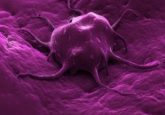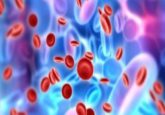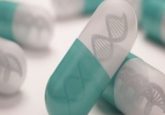Combination of nanoparticle and US FDA-approved photodynamic drug therapy kills tumors

A group of scientists led by Gang Han of the University of Massachusetts Medical School (MA, USA) have combined a new type of nanoparticle with photodynamic therapy in order to kill tumors.
The research, published recently in ACS Nano, has demonstrated that the combination therapy effectively kills deep-set cancer cells in vivo with minimal damage to surrounding tissues and fewer side effects than chemotherapy. The results indicate that the combination could be a promising new treatment strategy and suggest that the current use of photodynamic therapy could be expanded to deep-set tumors.
“We are very excited at the potential for clinical practice using our enhanced red-emission nanoparticles combined with FDA-approved photodynamic drug therapy to kill malignant cells in deeper tumors,” explained Han. “We have been able to do this with biocompatible low-power, deep-tissue-penetrating 980-nm near-infrared light.”
Photodynamic therapy involves the patient receiving a non-toxic light-sensitive drug, which is absorbed by all cells, including cancerous ones. Red laser lights specifically tuned to the drug molecules are then turned on the tumor area. When the red light interacts with the photosensitive drug, it produces a highly reactive form of oxygen that kills the malignant cancer cells while leaving most neighboring cells unaffected. However, due to the limited ability of the red light to penetrate tissue, current photodynamic therapies are currently only used for skin cancer or lesions in very shallow tissue.
The researchers used a new class of nanoparticles termed upconverting nanoparticles (UCNPs) in their investigation. The UCNPs were coated with calcium fluoride and were increasingly doped with ytterbium in order to achieve deep penetrating near-infrared light conversion into visible red light.
The researchers used the US FDA-approved photosensitizer drug aminolevulinic acid and combined it with the augmented red-emission UCNPs they created, after which near-infrared light was then turned on the tumor location. The researchers demonstrated that the UCNPs converted the near-infrared light into red light and activated the photodynamic drug at deeper levels than have been previously achieved by photodynamic therapy methods. The experiments were performed both in vitro and in animal models and demonstrated that the combination therapy improved destruction of the tumor using lower laser power.
Yong Zhang of the National University of Singapore (Singapore), who had no affiliation to the study but is known as a leader in the development and application of UCNPs, commented that the team had created the deepest-ever photodynamic therapy using an FDA-approved drug.
“This therapy has great promise as a non-invasive killer for malignant tumors that are beyond 1 cm in depth — breast cancer, lung cancer, and colon cancer, for example — without the side effects of chemotherapy,” Zhang explained.
Han explained: “This approach is an exciting new development for cancer treatment that is both effective and non-toxic; it also opens up new opportunities for using the augmented red-emission nanoparticles in other photonic and biophotonic applications.”
Source: University of Massachusetts Medical School press release




